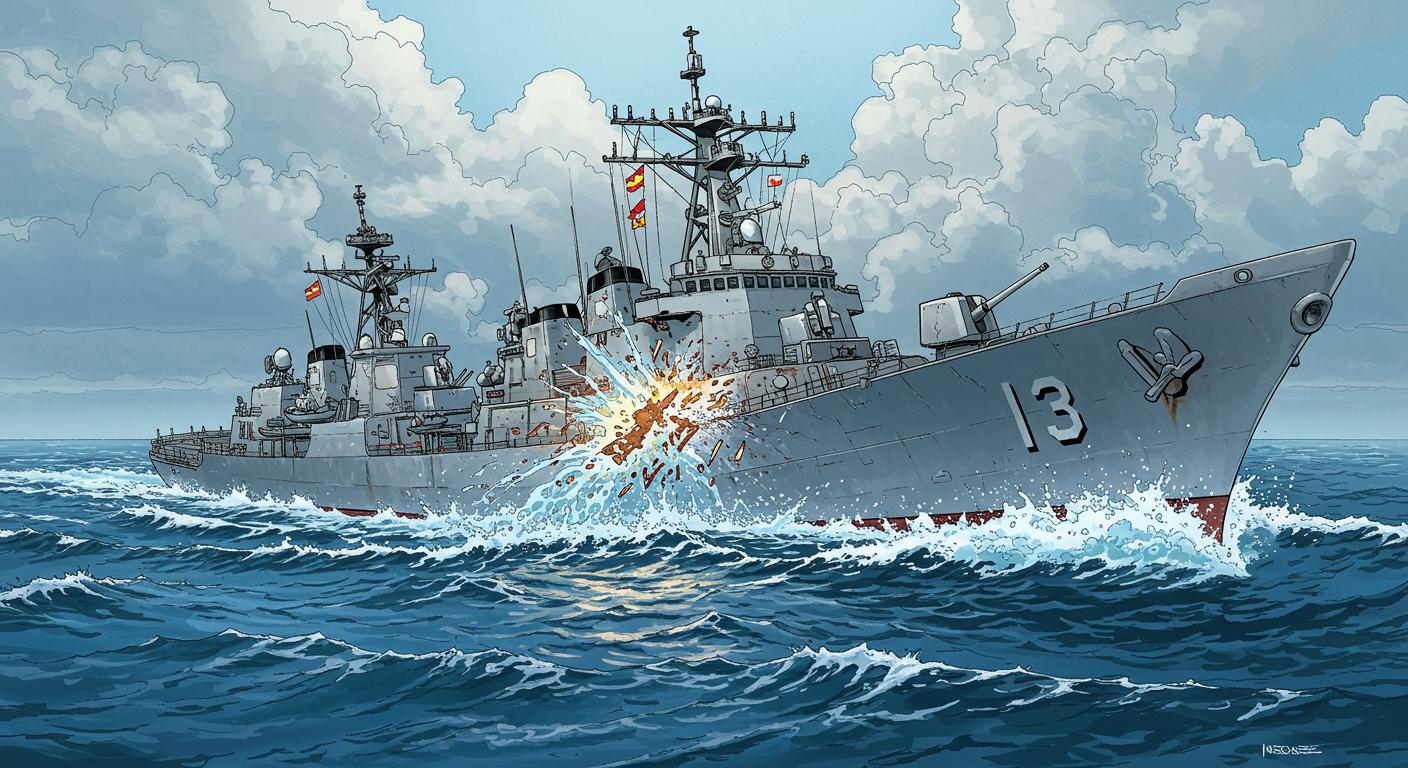There are maritime mishaps, and then there’s what just transpired off the Scarborough Shoal: a Chinese warship ramming into its own coast guard vessel in a botched pursuit of a Philippine boat. If it sounds like the premise of a particularly on-the-nose satire, rest assured, the details are all too real—albeit with that heady mix of irony reserved for the most fraught corners of geopolitics.
An Unintended Collision Course
Accounts from BBC News and Moneycontrol converge on an unusual scene: under the heavily contested skies of the South China Sea, Philippine officials were distributing aid to fishermen near the perpetually tense Scarborough Shoal when things went sideways—literally and figuratively. As described by Commodore Jay Tarriela of the Philippine Coast Guard, a Chinese coast guard vessel, intent on intercepting the Philippine crew, suddenly cut across the path of a larger Chinese navy ship. The result? Not so much a coordinated show of force as an unintentional demonstration of Newton’s First Law—ending with the warship’s bow taking what’s described as “substantial damage” and rendering it, in bureaucratic lingo, “unseaworthy.”
Video footage released by Manila, cited in both BBC News and Moneycontrol, captured a coast guard ship employing water cannons before abruptly slamming into its naval counterpart. There’s almost an air of slapstick chaos to it: an international stare-down devolving into a kind of maritime bumper cars—except with military hardware and, presumably, a great deal of paperwork to follow.
Although a third source, Yahoo, also ran coverage of the incident, it did not add any original reporting or unique details beyond those found in the primary coverage by BBC News and Moneycontrol.
What Was at Stake?
These aren’t just ships playing chicken for bragging rights. At the heart of the incident lies the Scarborough Shoal, a zone that’s basically the maritime equivalent of a perpetually borrowed lawn mower—contested, coveted, and the cause of more than a few neighborhood squabbles. The shoal has been a persistent flashpoint since China seized it in 2012, with both sides accusing the other of everything from reckless navigation to deploying knives, spears, and (yes) swords, as highlighted in the historical context provided by BBC News.
Beijing’s response this time? Predictably, China acknowledged a confrontation—while omitting the awkward internal collision—and accused the Philippines of “forcibly intruding” into their waters. The narrative hostilities have become almost routine: Manila says it’s urging respect for international laws and the COLREGS (International Regulations for Preventing Collisions at Sea), while China insists its actions are “professional, standard, and lawful,” as relayed by a spokesperson through government media and summarized by Moneycontrol.
But even by the usual standards of brinkmanship, the irony is hard to ignore: the only side demonstrably damaged this round was China’s own, pirouetting right into its fleet-mate—like two hall monitors running into each other while chasing down a rumored prankster.
Patterns Amid the Absurdity
Earlier in the BBC News report, there’s a recap of just how often these waters become the world’s strangest naval arena. Over the past two years, hazardous encounters have become almost routine. Among the highlights: the December incident in which Manila claimed a Chinese coast guard ship “sideswiped” a Philippine vessel, and the remarkable June 2024 skirmish where Filipino soldiers fended off swords and spears with their bare hands—resulting, as Manila said, in a lost thumb for one soldier. These anecdotes, whether involving medieval weaponry or modern collision, underscore the unique brand of tension simmering across this patch of ocean.
Still, friendly fire—especially at this scale—adds a new wrinkle. Does this reveal a lack of coordinated command, or was it simply a rare confluence of bad timing and high tension? Footage reviewed and released by Moneycontrol suggests the incident was as dramatic as it was inexplicable, and at the very least, it’s a vivid reminder that high-stakes maneuvering rarely leaves much room for error.
Reflections from the Watchtower
The South China Sea has never exactly been a calm pond, but moments like these serve to highlight just how far the choreography can go awry. There’s a tragicomic undertone to witnessing military precision unravel so publicly—especially when, amid the international finger-pointing, a warship ends up limping home due to a crash that could have been avoided with a bit more inter-ship communication (and perhaps a glance in the rearview).
As officials in Manila continue to stress the need for professionalism—and as the region watches with something between alarm and incredulity—one can only wonder what the next act in the ongoing maritime drama will look like. Has the stage been set for more miscommunications with even costlier results, or will cooler heads prevail, lesson learned from a spectacle that was as self-sabotaging as it was surreal? For now, the South China Sea remains, as ever, impossible to predict—a theater of bravado, boats, and, occasionally, a well-timed pratfall.







